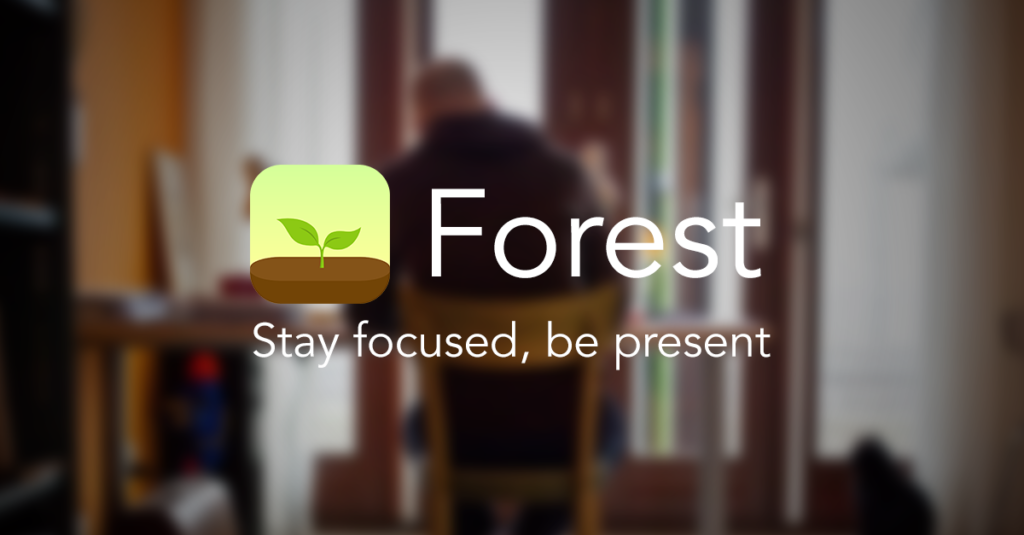I’m not the master, but I have struggled with working from home – or a coworking space or on the road – for the past few years, so I’ve gone through the pain. Offices are designed with one purpose, and yet even then there can be distractions. Working from anywhere else can be a mindfield. Everyone has their own methods but I believe these are some of the best tips to effectively work from home.
Without further ado, learn how to work well…
1. Dedicated Workspace

Set yourself up a dedicated workspace. I’ve been on the road and worked from public libraries, on the peace, and lying down overnight on a grubby airport floor. Usually, I find I can write up to a couple of hours. These spaces can be productive, but unfortunately they don’t set you up for success.
The best way is to have a space. Don’t make multiple spaces. Don’t think that if the sun is nice you’ll work in the garden today, or if you’re having a lazy morning, you can do it in bed. What you’ll need is a room or a corner or a table, that screams “workspace”.
Not only will it set your mind up mentally for the work ahead, and you’ll begin to associate the space with productivity, but you’ll find it easier to settle each time.
I have a few recommendations for a minimal workspace. Firstly, a good table is a must. Many people to save space have those computer tables with the draw that comes out packed into a section of the lounge or dining room or so forth. Most of them are bad quality and flimsy. You want a proper space that you can put pressure on, and it doesn’t budge.
Furthermore, and maybe the most important thing, you want a good chair. Personally, I use an office-gaming chair hybrid. It kinda makes me think I should be playing an arcade racing game (it’s black and red). Yet it’s very comfy. Search specifically for “office chair” or “gaming chair”. There’s a reason that they’ve become a niche to themselves over the last years. The reality is you will be spending up to 8 hours a day in this chair – or even more – and it needs to be usable.
One other important point is for the laptop users. Laptops are fantastic. They are so good that for many people the desktop has died a death. The problem with laptops before was that they were more expensive, they were slower with worse processors and memory, and they generally were less predictable and prone to breaking. Gone are those days.
However, and it’s a big one, they can’t escape one fact. They have smaller screens. I highly recommend investing in a classic desktop monitor. I find the difference beyond belief. You can even generally use a TV screen as well, as long as it’s digital, though computer monitors are better. And these days, everything tends to be very plug and play. Monitors tend to come with the older VGA input, then newer ones have DVI and the newest ones have HDMI. I prefer an HDMI input as it’s an easy lead to get and almost all laptops have a corresponding HDMI/mini HDMI/micro HDMI slot.
In fact, there’s a growing trend to have two monitors now so that you can spread your workload across two screens. Either way, it’s going to make your life a lot more effective and efficient.
Coupled to this, I tend to have a wireless keyboard and mouse. The combination allows me to close the laptop and put it out of the way, and have a complete desktop experience. But when I need to leave the house or go travelling, I just unplug the laptop and away you go. External keyboard and mice don’t have to break the bank. There are some very ergonomical ones but I like the Logitech ones that retail for about £20 (around $30 USD).
Finally if your space is limited, or you’re messy, think about a desk organiser. I have one that sits my monitor ontop, has space fore a few things around the monitor, a shelf for my external hard drives and DVD player, and a bottom space I put my laptop in.
These are the products below that I use to effectively work from home in my workspace. The Samsung Syncmaster has been discontinued so the monitor below is the nearest option:-
2. Set a Schedule & To-Do List

When I wake up every morning with the intention of doing nothing, I achieve it. I achieve absolutely nothing. However, if you want to be productive, you need to have a list. You need to have a system.
Different systems work for different people, and some people use a combination of things to help out. The first is to break the work day down into sections and have some form of timeline on what you can achieve in those times. A written to-do list is the most basic but it can work. Even better, create your to-do list the day before, or structure a whole week out. This will help you not only to be efficient but also to adapt if you’re having a slow day or there are some things you cannot get done in time.
Be stretching, but realistic. You want to have some spare time in case some tasks take longer than expected, and you don’t want to be stressed that they haven’t been doing. Conversely, you don’t want to be “twiddling your fingers” and you also want the stretch to feel like you’ve achieved.
For digital resources, there are a multitude of options to help schedule the day. Some are better for lone workers, some for teams. You may have some of these in your life already if you’re an employee (rather than being self-employed).
Monday, Trello, Asana, Slack, Microsoft Teams – the list goes on, from the more messenger and collaborative based programs to the more focused and singular.
Personally I recommend two – good old Microsoft Outlook and Asana. Outlook was one of the first tools that started to build in efficiency to the working structure. Primarily, it was an email program but the great thing about Outlook is that it let you assign tasks and build structure into the calendar. You could set things to repeat, have different categories and colours, and you would get reminders for meetings and tasks that you had coming up. Outlook was also powerful enough to be able to tweak it to your needs. I was a convert and used it for years when I was in corporate employment.
I use Asana now. I find it does the job, and the basic plan is free. It suits an individual. The other plans are more geared up towards premium options and teamwork, although I’ve heard that Asana sometimes struggles as teams and complexity grow.
It’s perfect, and very similar to the way that Outlook operates. You can set tasks and categories, recur them or set them daily, weekly, yearly and so forth, and colour code and categorise as you see fit.
Whatever option you chose, chose an option. Structure your day, and reap the reward. Otherwise, you’ll find a week goes by and you have nothing to show for your time.
This is one of my best tips to effectively work from home.
These are the Resources that I use to plan my day:-
3. Take Breaks

Some tips to effectively work from home are more pragmatic, and this is one of them. So you’ve set your schedule up, and this may seem obvious, but take breaks. Put the computer “away” and get off the desk. And I mean leave the desk and chair completely. If possible, get out the room. Go make yourself a coffee. Stare out the window. Have a walk round the house. Do fifty pushups. Whatever.
The key here is to mentally, physically and emotionally detach. Doing something at your desk that is not work, like grabbing your phone and playing with it for 5 or 10 minutes, isn’t going to have the effect.
Too often, especially when there’s a big project to kill, you can just keep going and going till you energy levels run dry, your concentration is minimal, and incremental steps take hours. Don’t get to that point.
Personally, I do things in 1 hour groupings, or 2 maximum. Every 2 hours gets a 15 minute break. I find the easiest way to both stick to not wandering away from my desk earlier, but also to take a break, is a kitchen timer. It might sound strange. Literally, get a kitchen timer (digital as the analogue ones tend to tick) or your phone (but can be dangerous) and set it to countdown an hour.
4. Hide Distractions (Phone & TV)

My fourth tip to effectively work from home is to hide distractions. I mentioned a timer on the phone can be a dangerous thing. Why? Because of the risk of getting sucked into social media. Personally, I think our mobile phones and our televisions are too of the biggest distractions in the modern world.
As I currently have a one room does all set up, it’s split into quarters. Bed, couch, TV and work desk. Each quarter fulfils a set purpose (I also have a wardrobe as well in case you were wondering). However, the TV was such a distraction so I just got rid of it. I now only watch TV and films on the laptop or a small tablet. Furthermore, the TV unit is now covered in books, so I read more.
Phones are the top distraction. We have built up some of the worst habits with them. And, for me, it’s not just social media. I can easily play on my phone for hours using different apps and browsing away, even if I don’t open Facebook or Instagram.
Two things make a difference with your phone. Hide it away, and set a routine.
If you don’t need the phone, I would suggest taking it out of the room altogether. If you use your phone for business, this becomes trickier. Some people actually have two phones for this very purpose, so they can split home and work life. If you don’t I find the handiest way is to take it off the work desk and put it behind me. Completely out of sight, and generally out of mind.
Secondly make sure you set a routine with your phone for non-work purposes. I look at social media in the morning, and then in the evening. I will reward myself with a little phone use in the day if I hit my targets. But only on my breaks, and generally I also try to do other things a well with these quick periods.
It’s strange but even though I can bring up Facebook on my laptop, it’s not as addictive as the phone. There’s something strangely alluring about flicking through with a thumb on a mobile.
If you want extra tips to effectively work from home, try apps to curb your phone use. One of the best apps I had for a while was a tree building app. You would set it for a set period of time, and the app would grow trees. While you were growing trees, you couldn’t access anything else on the phone. It was fantastic. I grew some weird and wonderful trees and I had fun.
There’s also apps that will block you from using your phone and in particular social media, for certain times of the day. If you struggle to keep off the phone, I highly recommend checking them out.
You may find some of my posts from last year to regulate phone use very helpful. Firstly, I took a month completely off my phone and documented it here. I also decided on my biggest learnings from that month.
A small note to add in these Covid times. News can be as distracting as social media. Do not get sucked into it – ten minutes a day on a phone, or a 20minute TV broadcast is more than enough for the day. Nothing has changed in the last hour or two that has immediate effect on you. Also, news should be new. Regurgitating the same story for months on end is soul destroying. Feed with caution.
Click on the below photos to be taken to wonderful apps to keep you focused off your phones:-
5. Go Outside

It’s important to take small breaks, as mentioned. But it’s also important to take a big break each day, whether that’s at lunchtime or after the working day.
I would highly recommend walking, but at the very least, go outside. Look at the sky, breath the air, sunbathe, walk, cycle, run, canoe, do yoga, listen to the birds, count the ants in your garden. Just do something. This one point over everything else will keep you sane.
We weren’t made to live inside. Conversely, shelter has made us more comfortable. We still need to remember that our bodies, like animals, are built for nature. They are not built for chairs, tables, keyboards, mobiles, and computer game sticks. Maybe evolution will change us in ten thousand years, if we and the world live to see that tale.
But for now, remember that your body is made for climbing trees and running. That’s when it feels most alive.
Personally, I go for a 10-15km walk daily. Does it eat into my time? Hugely. Does it keep me content, sane and ready for the rest of the crap? Absolutely.
Make sure this section is never before your work. The point is that it’s a break from your work, or a reward afterwards.
6. Embrace A Morning Routine

The yin to the yang of going outside is to make sure you have a morning routine. Or if you don’t work in the morning, a “before work routine”.
Why? A Morning Routine will relax you and prepare you for the work that is to come. It will become habitual and it will train the body into your work pattern. It will also act as an anti-work space in your day – almost a pre-detox.
I have a long morning routine. I wake, say a mantra of positivity for the day, have a coffee, read for an hour, do yoga, do pushups, have a shower and then settle into work. It takes about two hours. Yours does not have to be so lethargic, but I like mine. It allows me to read more and it allows me to feel more at peace and stretched out (as I have bad hips, back and knee) before I sit in a chair for 8 hours.
It could be much simpler. By find something that you stick to, and that will lead each day into work. This is almost what BJ Fogg in Tiny Habits calls your anchor. It’s the unmoveable thing that you can design new habits off of, or in our case, work becomes the behaviour.
7. Maintain Regular Hours

This can also be called “find your rhythm”, though many of the tips to effectively work from home here will assist. Maintaining regular hours is essential to train the brain to think “this is worktime; I must work”.
Now there are increasingly people that will inform you, in blog posts, conversations, and “enlightening” facebook videos, that the most successful people in the world get up at 7am in the morning. Wait no, actually, that’s so 2016 – they get up at 6am. Now I’m seeing posts espousing the benefit of getting up at 5am.
Kill me now.
If it continues, people will tell us to wake up at 10pm and go to sleep at 2pm.
Some people are night owls, some people are early risers. Others can develop to both, if they have the right mindset. It doesn’t matter if you type into the early hours of the night, or if you’re the type of person at your desk as the sun comes up. They are of course, natural advantages to following the early approach. Rise with the Earth and sleep when the Earth is in darkness. But I digress.
The most important point is that you set regular hours. Whatever works for you. And then, maintain and hone those hours.
8. Ground Rules for Others

Awww, family and friends – so well meaning. But they can be pains in the proverbial and literal backside.
Much like hiding digital distractions, we also need to curb the physical ones that regrettably we can’t turn off, put on pause or sell on Ebay. It is important to lay down a schedule for the time you spend with family and friends and time when you don’t (like worktime). It’s important to be social, but we’ve all been constantly interrupted by a well meaning, or just bored, member of our family.
“What are you doing?”
“Work”
“Oh okay, what work”
“Just stuff”
“You going to be long?”
… and the conversation continues.
The best thing to do is have your regular hours, as above, and let everyone know that during that time, you will be indisposed. Certainly, when you come out for your breaks, that’s another matter.
Personally, I have an open door policy, and it’s easy. If the door’s open, come in. If it’s closed, go away. If you work in a communal space, then it’s important to lay the rules down as to how you want to be interacted with during the day. If you’re still finding it difficult, you may want to go back to thinking about your dedicate workspace, and if it’s in the right place.
9. Get Dressed

I’ve done some cracking writing in my pyjamas, but it doesn’t last long. Some people can pull off the “sat in bed with PJs smashing the workload” look, or the “lying on the couch in loungewear with the laptop half way up my knees” style. Most people can’t.
It’s proven that getting up, having a shower and getting dressed will mentally set you up for the day. And your body will think, I’m in work mode. It might just be one of the missing tips to effectively work from home that your body has been missing. It doesn’t have to be office attire – it can be comfortable. But it should be something that doesn’t say, I’m going running or I should be in bed.
You’ll find you get a lot more done.
10. Self Care

Above all else, tips to effectively work from home can come in all shapes and sizes, but remember this: the key to work is to be in the right frame of mind. That takes self-care. People burn out if they just work continuously.
Many of these individual steps like using less social media, having a morning routine, taking breaks and going outside, setting schedule hours will help you be kind to yourself. That balance is necessary.
Be kind. Work hard. Work effectively.
What do You Think?
So what do you think of the 10 tips to effectively work from home? Agree or disagree?
Any to add, or ones you thin are paritcularly effective – let me know in the comment section below.
Further Resources
Click on each tab below for resources




2 comments
I agree 100% with all of these!! Having worked from home for the past 7 years (a few days per week when I was working corporate, and now I work from home everyday), these are things that I have learned to incorporate into my work from home regimen. Great article!
Thanks Lauren – any other tips you use with 7 years experience?